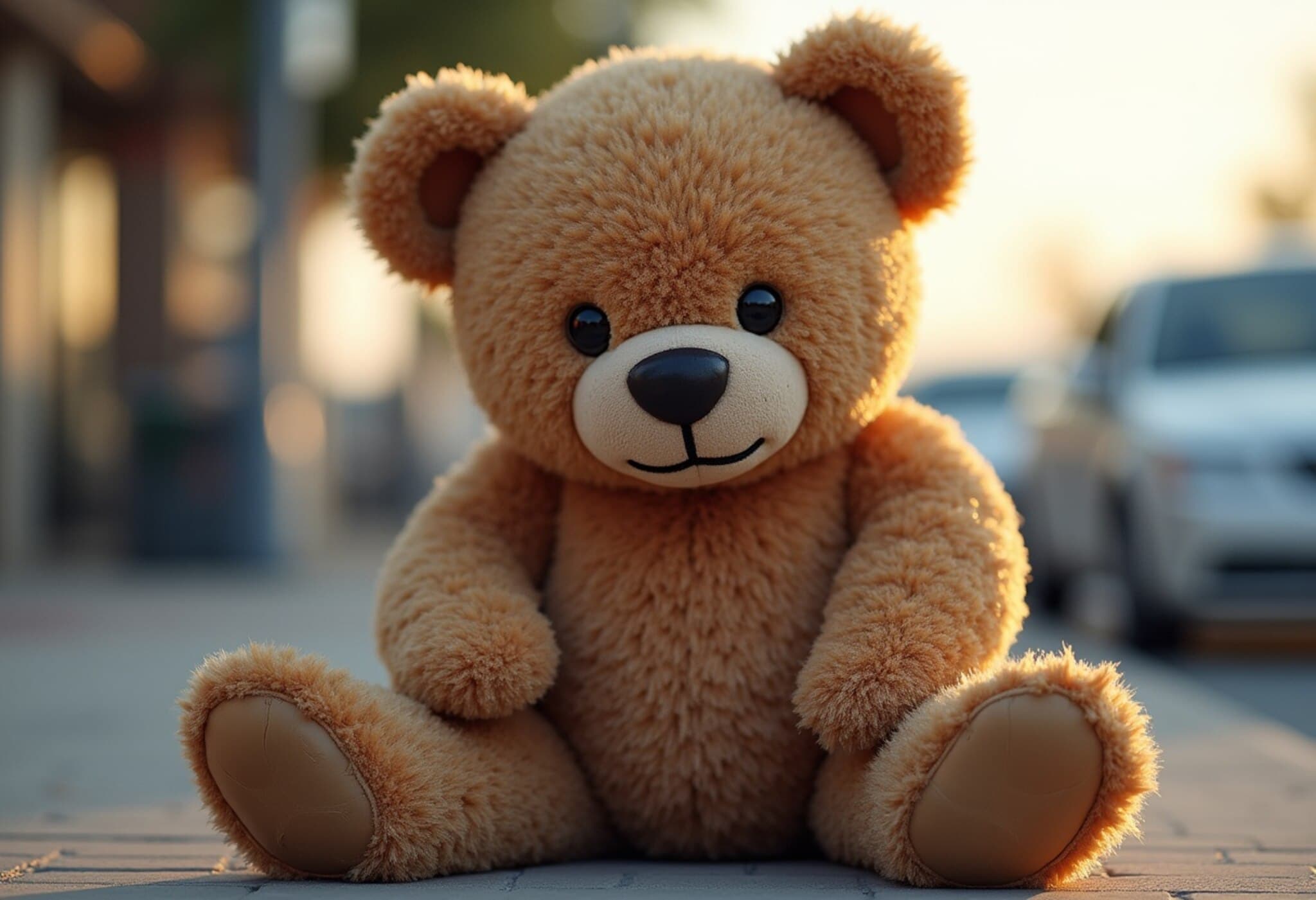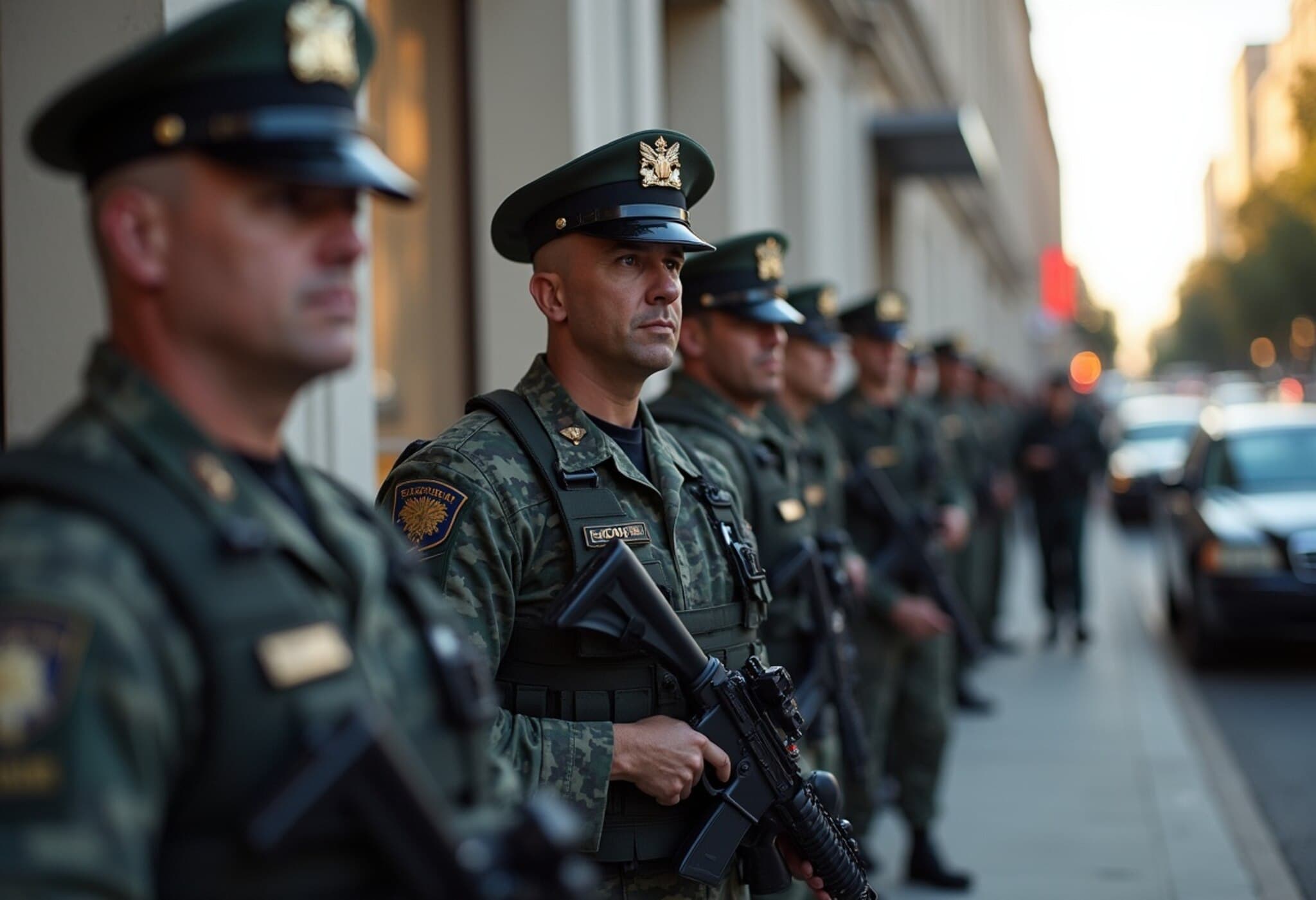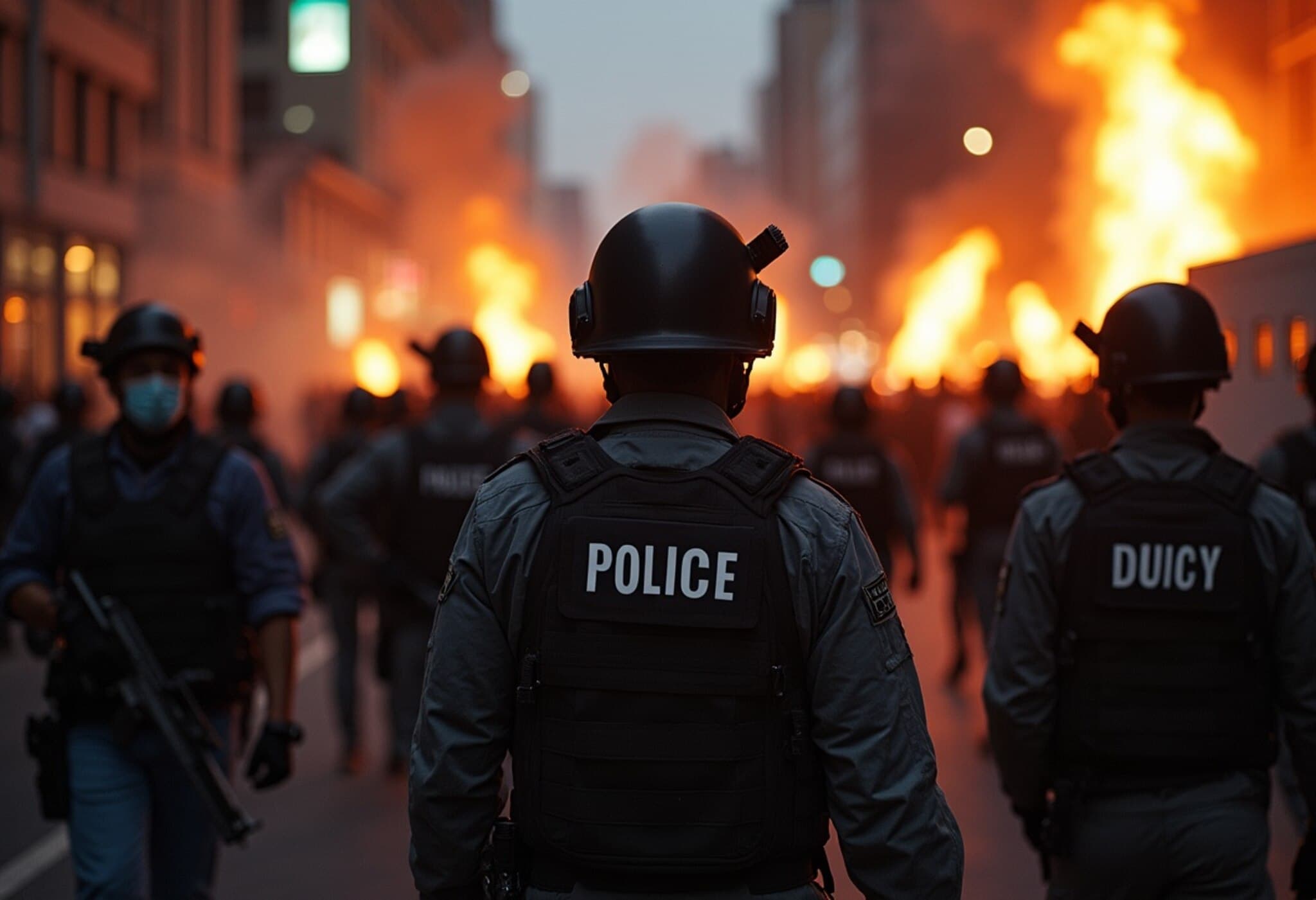Grotesque ‘Human Skin’ Teddy Bear Prank Shakes Victorville Community
In an unsettling scene that felt more like a macabre crime drama than real life, residents of Victorville, California, were left staring in shock at what appeared to be a teddy bear made from bloody human skin. This chilling spectacle, placed deliberately at a local gas station bus stop, quickly stirred panic and drew a police investigation—only to reveal an eerie prank that backfired.
From Horror Prop to Public Panic: The Story Behind the Bear
On a seemingly ordinary day in the Mojave Desert city, not far from the midpoint between downtown Los Angeles and the Nevada border, passersby discovered a disturbingly realistic teddy bear resting on the pavement of a bus stop. The bear’s grotesque, bloody appearance was so convincing that alarmed individuals immediately contacted local authorities. The concern escalated when the San Bernardino County police involved a deputy coroner to examine if the doll contained authentic human flesh.
Forensic analysis ultimately determined the bear was not made of human tissue but was, rather, crafted from highly realistic latex—a form of horror art available for purchase online. The coroner noted that such dolls are commercially sold with claims of being "made of human skin", a chilling marketing ploy in the niche horror prop market.
Identifying the Culprit and the Artist Behind the Creation
Authorities traced the bear to Victorville resident Hector Corona Villanueva, who admitted to purchasing the doll online and staging the shocking display as a prank. Notably, Villanueva did not alert the authorities himself, leading to his arrest by the San Bernardino County Sheriff’s Department on charges linked with the incident.
Adding another layer to the story, Robert Kelly, founder of Dark Seed Creations—a company renowned for crafting hyper-realistic horror props—claimed credit as the bear’s creator. Speaking to NBC News, Kelly explained that the bear was made using latex live castings from real human models, underscoring the painstaking artistry that went into the terrifyingly lifelike doll. His shipment records confirmed the bear was delivered to Victorville on July 12, days before the prank unraveled.
Community Impact and Law Enforcement Response
While the bear was ultimately harmless, the stunt raised serious concerns among local officials. The Sheriff's Department issued a statement highlighting that such pranks drain vital emergency resources and could potentially delay responses to genuine emergencies. This incident serves as a stark reminder of the unintended consequences that seemingly harmless hoaxes can provoke.
Expert Insight: The Fine Line Between Artistry and Public Safety
The Victorville teddy bear episode reflects a broader cultural tension between freedom of artistic expression and community responsibility. Hyper-realistic horror props like Kelly’s creations have surged in popularity, fueled by growing interest in horror culture and immersive experiences. However, when these provocative artworks enter public spaces without context, they can unintentionally traumatize or trigger emergency responses.
From a policy perspective, this incident raises questions about regulating the public display of potentially alarming artwork. Could clearer guidelines or public awareness campaigns help prevent similar scares? Moreover, it shines a light on the psychological impact such imagery can have on everyday citizens—not only sparking fear but also straining local law enforcement.
What’s Next for Victorville and Beyond?
The arrest of Villanueva may serve as a cautionary tale nationwide for anyone considering provocative pranks that blur the boundaries of safety and decency. As online marketplaces enable easy access to lifelike horror memorabilia, both sellers and buyers bear a responsibility to consider the broader societal effects.
Law enforcement agencies might also consider better community outreach and rapid communication strategies to quickly dispel such scares without diverting critical resources. Ultimately, the Victorville teddy bear episode is a vivid example of how modern-day pranks can spiral unexpectedly, reminding us all of the complex interplay between shock value, art, and public welfare.
Editor’s Note:
This bizarre incident serves as more than a quirky news story; it highlights the delicate balance between creative freedom and community safety. It prompts us to think critically about how emerging trends in horror artistry intersect with public perception and law enforcement preparedness. As hyper-realistic props grow more sophisticated, what measures can communities take to ensure they remain sources of entertainment rather than panic? This story invites policymakers, artists, and citizens alike to engage in this evolving dialogue.











